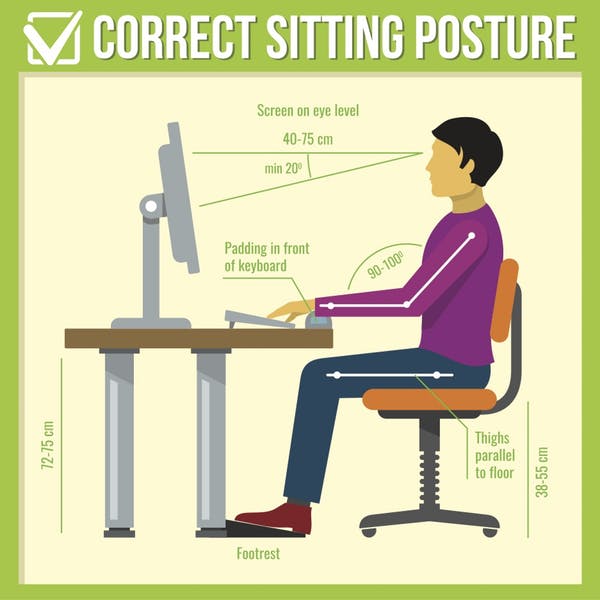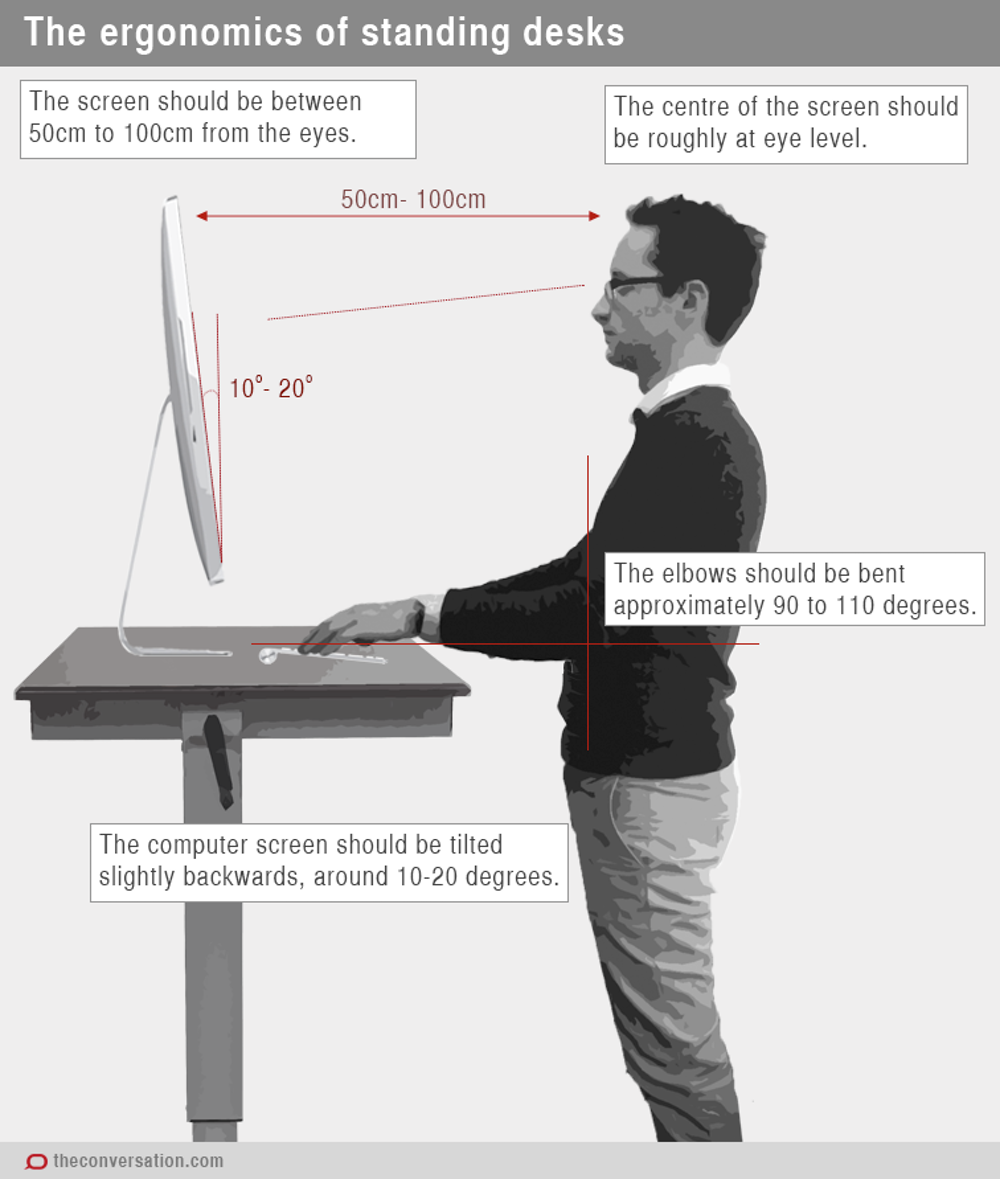September 22 2019
There is always a lot of talk in the media and at the water cooler about posture. Everyone has an idea of what perfect posture is and we all strive to make sure that we maintain good posture to prevent getting sore throughout the day. But what is the perfect posture?
A lot of modern lifestyle habits now dictate that we spend a lot of time sitting for work and recreation. Unfortunately, the evidence doesn’t stack up that there is a particular posture that prevents injury. So what should we all be doing? Sit down and get comfortable for this short read on all things posture …
What is Ideal Posture
Surprisingly there is no such thing as the perfect posture! We have all done the trick where we sit bolt upright all day to try and “fix” our posture. This can actually be detrimental and make you more sore by compressing through your spine all day and causing pain.
Upright sitting and standing don’t have the literature to support that they prevent injury or pain. There is a lot of variation in spine curvature in the general population and for some people, sitting with a “hunched” or curved spine is not going to be detrimental to health or cause pain.
What the research is telling us is that a good ergonomic setup and being able to vary your posture throughout the day are two of the best ways to prevent pain from sitting and standing. The notion of “perfect posture” is essentially just a cultural belief that we can’t shake.
In essence, set yourself up well and vary your posture throughout the day and this will give you the best chance of staying pain free.
Posture for Sitting
As we mentioned, our use of computers, phones, tablets and going out for smashed avocado brunches mean that we are sitting for a lot of our work and social lives. Getting the right setup, particularly for work, is important to make sure you aren’t putting unnecessary strain on the various tissues of your body. This graphic below is a great start for making sure you have your home and work setup going well …
Once your setup is sorted the most important thing to remember is …
“Your next posture is your best posture”
There is some good evidence to suggest that exercising throughout the work day can reduce muscle discomfort and eye strain. It is recommended that you get up and walk around or do some exercises at your desk every 30 minutes. There are multiple ways in which you can make sure you are getting your daily fix. Smart watches can alert us to get up and move. Some computer programs that you can install on your computer (click this link for more info) remind you to get up and move. Perhaps the easiest way is to set a regular 30 minute alarm on your smart phone!
Basically, get your setup right and move regularly throughout the day and you should be able to avoid posture related pain from sitting.
Posture for Standing
The latest strategy for alleviating back and neck pain for desk workers is the standing desk. The rollout of these new workstations has swept offices around the country in recent years. With the negative effects of prolonged sitting now well known, standing desks are argued to create a better alternative. However, much like sitting, standing for prolonged periods can also give rise to pain and soreness if you don’t vary your posture and move throughout the day.
As with sitting, getting your setup right with a standing desk is important. See the below graphic for some basic tips …
As most people aren’t used to standing for work when they first get setup, it is important to ease yourself into the new routine. Start with short periods of standing to break up your sitting until you find a routine that works for you. Some people like standing earlier in the day and sitting later when they get a little more tired.
Another useful tip is to keep your weight spread evenly across your feet. Good supportive shoes are also important. You can also incorporate standing into your workday in other ways such as taking all of your phone calls standing up or having work conversations with colleagues standing or walking.
Posture for Lifting
Another long held view related to posture is that you can’t bend your back when you lift anything. We have been told over many years that bending your knees and keeping your back straight is the safe way to lift and the best way to avoid injury. But … you guessed it, the latest research shows there is no credible evidence to suggest that a straight back lifting posture puts less load through the spine. The authors of a recent study in this space suggest that lifting with a round back posture is potentially more efficient too.
The latest advice is to relax your back when you lift and only lift what you feel like you can lift comfortably. If you perceive the weight to be too heavy you risk injury regardless of the type of posture you adopt.
A Word on Backpacks
School backpacks. They seem to be getting worse each year. Heavier and more textbooks. Now computers and iPads. Teenagers carry them on one shoulder and despite parents warnings they love carrying them as low as possible. Another myth that we can now bust though is that backpacks don’t create back pain in children and adolescents.
The latest research suggests that the only thing that relates to back pain with backpacks is the perceived weight of the bag. If the child/teenager thinks the bag is too heavy then this could be a potential for increased risk of injury.
Essentially, people with back pain can have their pain worsened by carrying a backpack but it is unlikely this was the original source of the pain. If this happens to you or your children, try decreasing the weight of the bag or carrying it for shorter periods.
Final Word
Posture can be complex. We have in the past used generic advice for sitting standing and lifting and applied it to everyone. The facts are that each person’s posture is different due to the different curvature of the spine. The spine is one of the most robust structures in the body and unfortunately there is a lot of fear around having to hold our posture still and rigid when we sit, move and lift. Teaching our backs to move through exploring different movement patterns and exercises and not being fearful of moving will get you a long way to ensuring posture is not a reason for you to develop any pain or injury.
Remember, your next posture is your best posture! Don’t be afraid to move! Until next time …
FURTHER READING
If you would like further reading on posture and it’s relationship to health, click on these links below;
Sitting advice via The Conversation
https://theconversation.com/health-check-whats-the-best-way-to-sit-113197
Can bad posture give you a hunchback?
https://theconversation.com/health-check-can-bad-posture-give-you-a-hunchback-56068
The low down on standing desks
https://theconversation.com/health-check-the-low-down-on-standing-desks-37515
All things backpacks
Advice for posture and lifting





